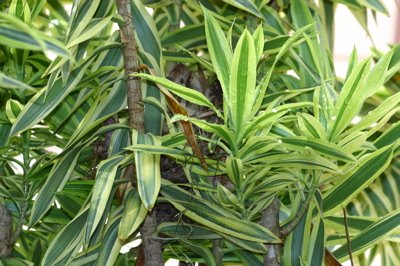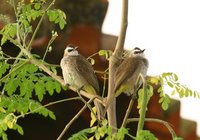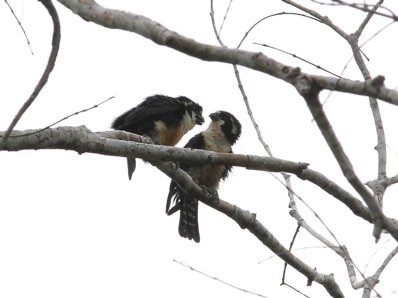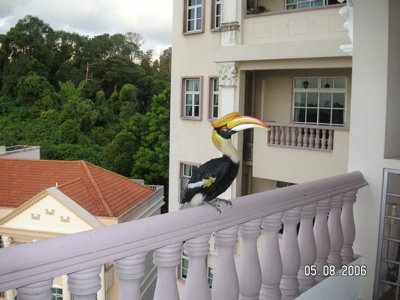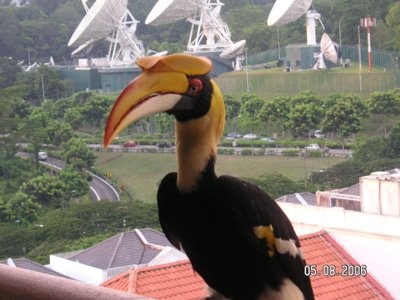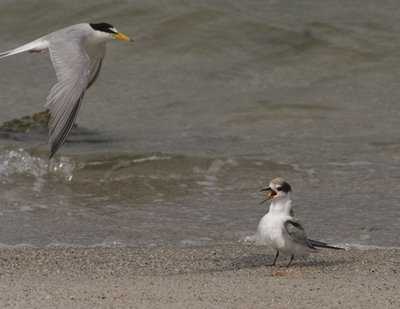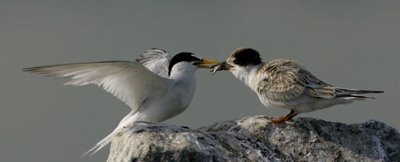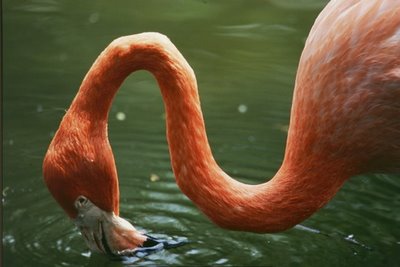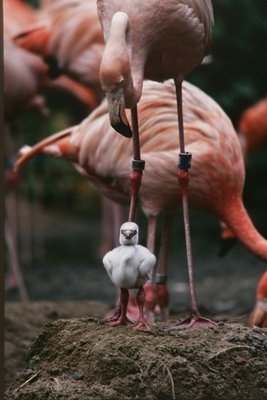Heading out of the durian orchard, still mesmerised by the incredible luck my birding-photographer partner and I had (see
1), Chien spotted another Blue-winged Pitta (
Pitta moluccensis) that flew into a fruit tree branch previously perched by the intruding Greater Racket-tailed Drongo (
Dicrurus paradisus). We were soon to find out why.
We hastily headed for a low canopy tree and took cover. We held our breath and froze in between. Binoculars 8x42 were used at an approximate distance of 12 metres away.

The pitta did some series of ‘hop and skip’ on the spot while perching under the tree canopy and shunting occasionally in different directions. The turning of it’s head from right to left with a visual field of 180 degrees and vice versa was done repeatedly while checking consistently for intruders. This behavior appeared to be the main feature of this species in breeding mode.
There were moments when the pitta paused and remained still as if to listen. The elusive pitta has an acute sense of hearing and indeed the ability to detect intruders a great distance away. The game will be over if the intruder is sighted by the bird. This will, in turn, send the intruder on a wild goose chase.
While the breeding bird remained and hopped-fly from one branch to another, a series of opportunity camera shots ‘clicked’ out from Chien’s Nikon D200, taken from our observation point, undercover and undetected by the bird. No flash photography was used or needed that morning.
The Blue Winged Pitta, in exercising extra precautions, flew and perched on a concrete post further away. Its repeated the usual breeding behavior before a quick dash flight over the fence and disappeared into the undergrowth.
The pitta was just out to stretch her wings, to feed and was on the way back to continue with the business of incubating the eggs. It was by chance we spotted her.
The Blue-winged Pitta is observed to practice a ‘two step’ approach to the nesting site – the location, which we were unaware of until about two weeks later. Both of us had not encountered a pitta’s nesting site before. Thus it did not dawn on us that the pitta was actually flying into a nest.

Parenting behavior was witnessed on 27th June 2006, a week after four chicks were hatched. They were observed under camouflage drapes no less than 10 metres away at half-hour intervals on three occasions: morning, afternoon and evening over different days.
Parenting behavior of pittas is an observation that arouses human compassion. The amount of stress the parents took on, the hard work of sourcing and feeding four chicks every 10-12 minutes continuously, the team work of sharing, caring for their young and protecting against intruders, call for an immeasurable respect of this avian family.
As ground nesters, the chicks are more prone to predators like stray animals, reptiles, insects and human destructive predation. As such, more surveillance are required of such species designed to be excellent practitioners of vigilance and decoy.

Earthworms were mainly the diet for one-week old chicks and abundantly had in the fertile orchards. It was also observed that initial trips to source earthworms were made further away from the nesting site. Towards the end of the fledging period, the exhausted parents, having lost considerable weight, were seen with less juicy pickings from near.
It was also observed that while a parent was foraging, the other vigilant parent was never far away and would use the fruit tree canopy for sentry duty. Any bird, strangers that approached too close for comfort, a series of alarm calls, ‘skyeew’ would ring out to ward off intruders and warn his mate to caution it’s approach.
Birder-photographers finding themselves in this situation should concede defeat and back off, leave the place altogether out of the bird’s sight to allow feeding to resume. The parent, with a beakful of worms, would fly off in opposite directions to the nesting site and wait it out patiently. It will only return on a ‘two step’ approach when all is clear. Such is the intelligence of this species.
Having witnessed the extreme fragility and harsh environment upon which Blue-winged Pittas choose to breed, this is one species that the best and kindest thing for humans when nestlings are found (having seen one before), is to leave the parents alone to get on with their business of fledging their chicks and let nature takes it’s own course.
It is unfortunate that I am not able to provide the first initial week’s documentary account and the after fledging of the chicks as Chien and I decided to abandon our observations under difficult circumstances of an increasing crowd. The birds’ welfare had to come first.
I would like to thank
Choo Tse Chien for generously providing me with very decent photographs for your viewing pleasure and
Connie Khoo of Ipoh for the picture of the juvenile chick. I take great pleasure in sharing the credit with them.
It was reported by other birders that three chicks fledged out of a clutch of four eggs.
Submitted by: DAISY O’NEILL PENANG, MALAYSIA
 Indian Peafowl (Pavo cristatus), also known as Common Peafowl and Indian Peacock, are popular with parks and zoos worldwide. They are free ranging birds and are easily kept. The Singapore Zoological Garden’s peafowl frequently fly off to the nearby forest area along Mandai Lake Road to forage.
Indian Peafowl (Pavo cristatus), also known as Common Peafowl and Indian Peacock, are popular with parks and zoos worldwide. They are free ranging birds and are easily kept. The Singapore Zoological Garden’s peafowl frequently fly off to the nearby forest area along Mandai Lake Road to forage.  Lately, Meng and Melinda Chan came across a peahen that flew over to lay her eggs. The bird chose a large bird’s nest fern (Asplenium nidus) that grew on a raised tree stump to lay four eggs that were larger than chicken eggs. She was sitting on the fern incubating her eggs. The male was nowhere in sight.
Lately, Meng and Melinda Chan came across a peahen that flew over to lay her eggs. The bird chose a large bird’s nest fern (Asplenium nidus) that grew on a raised tree stump to lay four eggs that were larger than chicken eggs. She was sitting on the fern incubating her eggs. The male was nowhere in sight.  Peahen generally attracts attention in Singapore and one laying eggs attracts more attention. Was it a wonder then that one egg was earlier destroyed by someone and another pinched by an irresponsible person?
Peahen generally attracts attention in Singapore and one laying eggs attracts more attention. Was it a wonder then that one egg was earlier destroyed by someone and another pinched by an irresponsible person?  The bird later abandoned her last egg as she was seen wandering about and not incubating in her nest.
The bird later abandoned her last egg as she was seen wandering about and not incubating in her nest. 